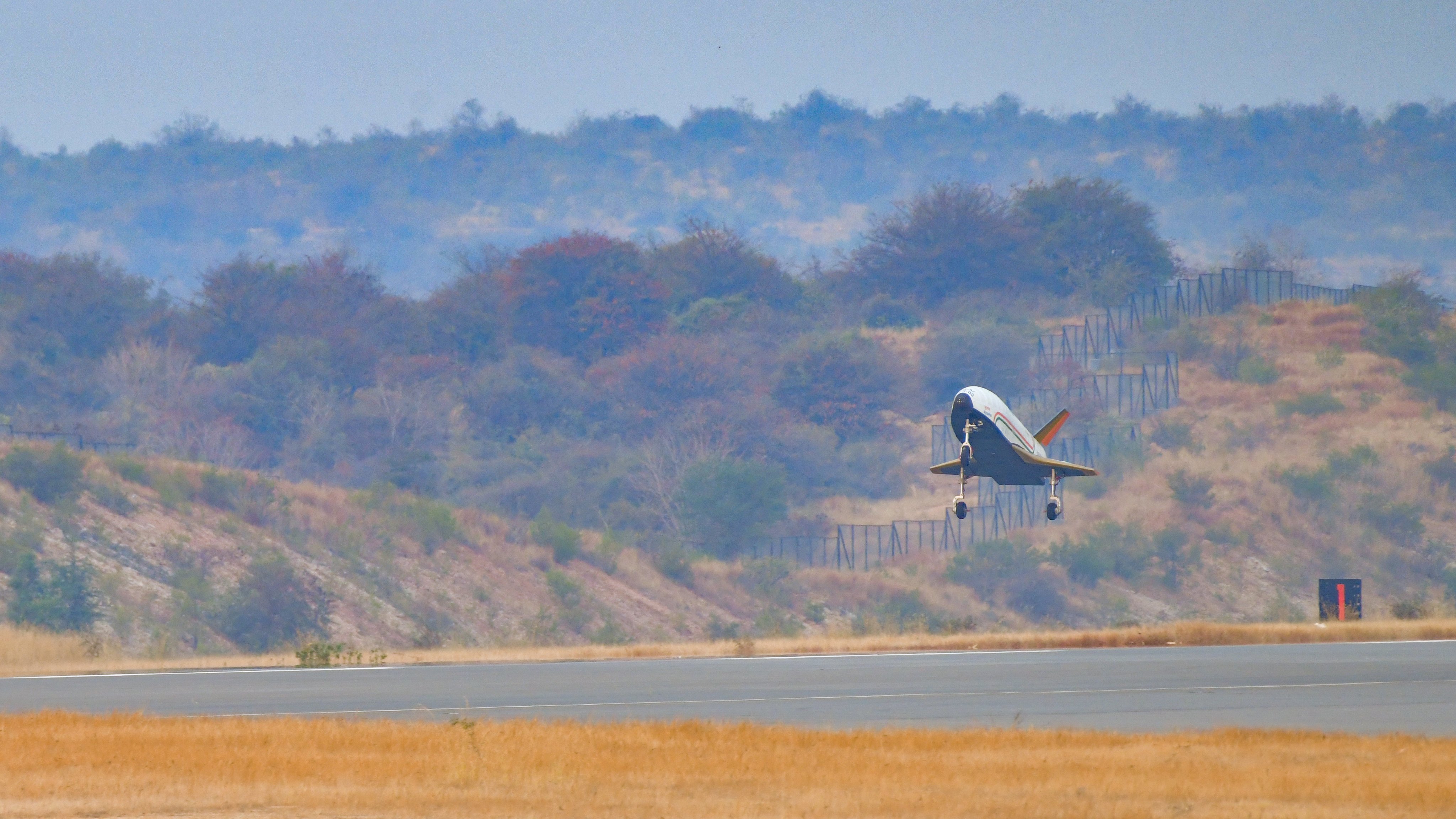SOURCE: AFI

The Indian Space Research Organisation (ISRO) is setting its sights on the next chapter in its Reusable Launch Vehicle (RLV) technology development program with the upcoming LEX-3 mission. Scheduled for next month, LEX-3 will mark a significant step forward by incorporating more sensors and potentially even a payload onto the scaled RLV model.
This mission builds upon the successes of the previous RLV-LEX flights. RLV-LEX-01, accomplished last year, laid the groundwork for further development. RLV-LEX-02 then focused on refining the autonomous landing capability, particularly under challenging conditions. The test vehicle, named Pushpak, was released from an Indian Air Force Chinook helicopter at an altitude of 4.5 km. Simulating a launch scenario, Pushpak was released 4 km away from the designated runway. Despite these dispersions, the vehicle autonomously performed cross-range corrections and landed precisely on the runway using its onboard systems.
LEX-3 will push the boundaries even further. The inclusion of additional sensors and a potential payload will allow ISRO to gather even more critical data. This data will be instrumental in the development of a larger RLV platform, paving the way for a fully reusable launch vehicle in the future.
This advancement in RLV technology holds immense potential for ISRO. Reusable launch vehicles offer significant cost savings compared to traditional expendable launch vehicles. By successfully developing and deploying RLVs, ISRO can achieve more cost-effective and sustainable space exploration endeavors. The upcoming LEX-3 mission is a crucial step on this exciting journey.